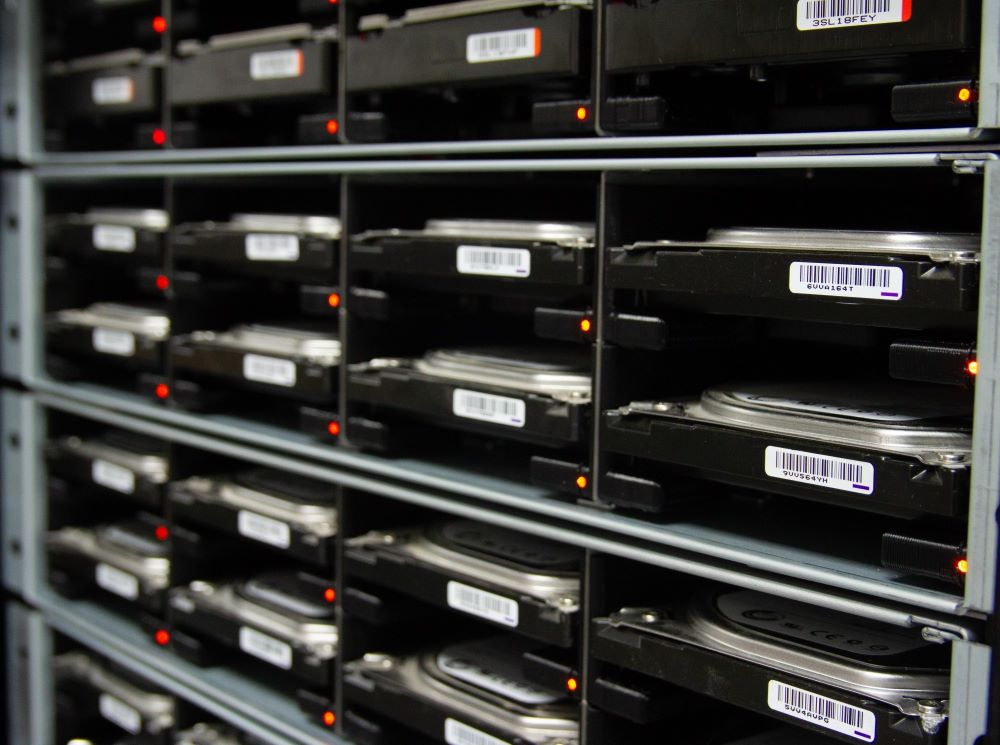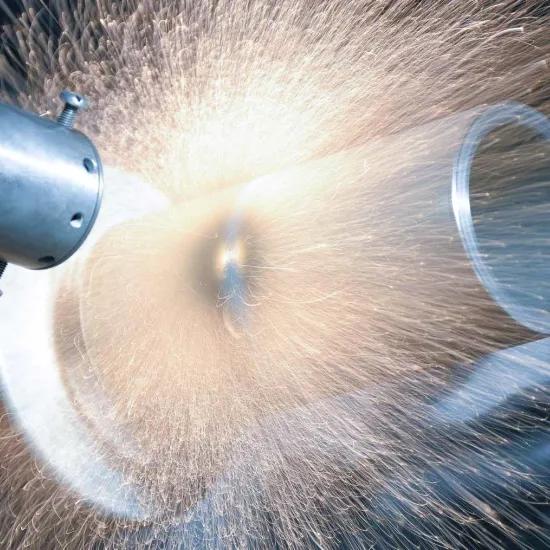Set up a feasible ReX concept step-by-step
If you want to set up activities such as remanufacturing and refurbishing, you must of course also have a return logistics system that supplies you with enough discarded products (cores). It is the quality, volume and frequency of this inflow that largely determines the economic feasibility of your ReX concept. The cost of purchasing cores depends on how you organise this. This article gives an overview of the most common strategies and factors that determine the acquisition cost.
By 'core' we mean the end-of-use products or components that you will upgrade into new products or components.
We use 'ReX' as an umbrella term for 'Remanufacturing, refurbishing, retrofitting, etc.' It brings together the circular strategies for extending product lifespans.
Possible strategies to select or combine yourself
The strategy you use to get enough input into your remanufacturing process can differ greatly for OEMs and independent service providers. The following outlines a number of common strategies that you can explore for your products or customer segments:
Security deposit
By requiring a deposit for the initial sale of a new product, you give the customer a financial incentive to return the product when it is taken out of use. This creates a direct relationship between the supplier and the customer, negating the need for and cost of middlemen. Market acceptance of such a deposit can depend heavily on the type of product and customer.
Service contract
If you integrate remanufacturing as a service when selling products, this can be an advantage for both the customer (ensured maintenance and upgrade) and the provider (cost savings).
Direct ordering
This is for the customer who wants their product remanufactured immediately. As a remanufacturer you then have to draw up a quotation for each request, having determined the residual value and remanufacturing costs.
Credit-based
On returning the products, the customer receives a credit they can use when purchasing another remanufactured or new product. In practice, the customer usually purchases a product (new or remanufactured) at full price and receives a credit note when the supplier has regained possession of the discarded product.
Buyback
The supplier can offer a buyback to the customer if the discarded product meets a number of criteria. The benefits of this are similar to those of the deposit approach. The big difference in this case is that the criteria determining the value of the takeback can obviously vary over time. This requires expertise and information about effective product use.
Exchange ('swapping')
This is essentially a combination of the deposit and credit models. The advantage is that it offers a balance between the incoming and outgoing products. The disadvantage is that changing customer needs - such as needing more devices that require remanufactured parts - also affect the remanufacturer's offer. In this example, additional cores will have to be sourced elsewhere to continue meeting the need.
Contractual agreements with brokers
As a remanufacturing organisation, you make agreements with 'core brokers’, who collect discarded products. You can then make annual agreements about volume, types of components, etc. This is a common practice in the automotive industry.
Lease or rental contracts
Purchasing products after their lease or rental period is a fairly safe way to acquire products with a 'uniform' quality and remaining service life. These can be products you rented out yourself or acquired through a lessor or leasing company.
Centralised collection centre
In this case, products are obtained in larger volumes per product/ type by means of centralisation. The discarded products are brought together in a single location, allowing for efficient processing, inspection, valuation, etc. A disadvantage of this is the higher transport cost, resulting in some of the products not being collected.
Services and unburdening during disposal
In this case, the customer uses a disposal service. The costs for storage, dismantling, collection and transport, processing of discarded products and the associated waste are therefore borne by the service provider rather than the customer. The price of this service then depends on the regulations, nature and type of waste, etc. This unburdens the customer and allows the provider to acquire cores. The provider, however, must offer the complete process (including compliance with regulations).
As always, there is no one best strategy. Due to the large differences between products in the product and service portfolio of your remanufacturing activities and the differences between customer segments, it may make sense to use multiple strategies in parallel.
The cost price also depends on the product type
The strategies aimed at purchasing from the customer or brokers (dealers, collectors) have four dominant cost-price factors.
- You are paid to collect the cores because there are waste regulations for processing (toxic substances, oil, etc.). Your revenue is therefore based on the waste processing price minus x%.
- The product itself is free of charge, but not the dismantling and logistics. You must provide these yourself. The logistics aspects (geographical location, planning, the combination of transports, etc.) therefore largely determine the cost.
- There is an (ad-hoc) price negotiation for each transaction (possibly via brokers). Large price variations are possible, from 'scrap price + x%' to a price close to that which customers are willing to pay for a remanufactured product (e.g. with high functional value). Think, for instance, of products that can be resold with almost no processing operations (i.e. products with a large 'remaining service life'). For example, purchasing from rental centres that focus on high-end products. These typically sell their products with around 30 percent remaining service life, while rental companies that use cheap equipment have a greater need for income from resale and therefore sell younger products, albeit from non-premium brands.
- Price negotiations are not possible. This typically involves standard products for which there is already a mature market driven by traders or large suppliers. These might be, for example, electronic products from major telecom operators or standardised parts from the automotive industry. Things can be different if you purchase directly from the user (see the Out of Use case).
Which segment is your product in? Can you easily acquire cores in your price range? Time to validate.
How? The best way to validate is to try it. Go out, try to purchase a few cores and get them into your company for an initial test.
Case: Out of Use
Orange is currently renewing their customers' set-up boxes, amounting to 200,000 to 300,000 pieces. They opted for the Out of Use approach.
The first step is for an external custom service company to dismantle the devices to remove the 1TB hard drives. The hard drives can only be reused after all data has been certified deleted. This happens in Out of Use’s data wiping centre (approximately 1,200 disks per day). After repackaging, the drives are free of data, tested and ready to use. They find a second life in a range of different applications – including karaoke systems.
Out of Use has agreed to a fixed fee per hard drive with Orange. It is a win-win-win situation because Out of Use opts for a division of the added value (Revenue Share). The value of the recyclates (of the non-reusable fraction) plus the value of repurposing the hard drives is therefore shared between Out of Use and Orange. Orange then invests this added value in the Out of Use reforestation project (in collaboration with Natuurpunt and Natagora). Thanks to this project, approximately 80,000 m² of new forest has already been planted in Belgium. Moreover, Out of Use doesn’t just give added value on an ecological and economic level, it also provides CSRD-compliant reporting as an important part of the total service.
Ensuring the inflow of cores is therefore more than just a price negotiation. The collection strategy fits into a circular approach in which all parties involved can achieve their common goals. And those goals, in this case, are not exclusively financial.
You can do this yourself
Consider which sources of incoming products (cores) you can leverage.
- Existing customers who also buy new products
- Collectors, leasing companies, (large) fleet owners, distributors, maintenance and other service providers, etc.
Which parties do you already have contact with? Which ones does it make the most sense to contact? What questions would you ask them?
Go out and ask them.
Remanufacturing, repair, upgrading, refurbishing, reuse, ... these are all valuable circular strategies, but how can you be sure that you are exploring and testing the strategy most suitable for an SME context? By way of the COOCK project 'CIRCLE - Remanufacturing as a lever for value creation in a circular manufacturing industry’, with the support of Flanders Innovation & Entrepreneurship (VLAIO), Sirris provides you with the strategy and practical tools (technologies, tools, etc.) that help you limit the risks and increase the opportunity for increasing success.
Want to start yourself? More information and tools can be found at the start-with-remanufacturing page.





